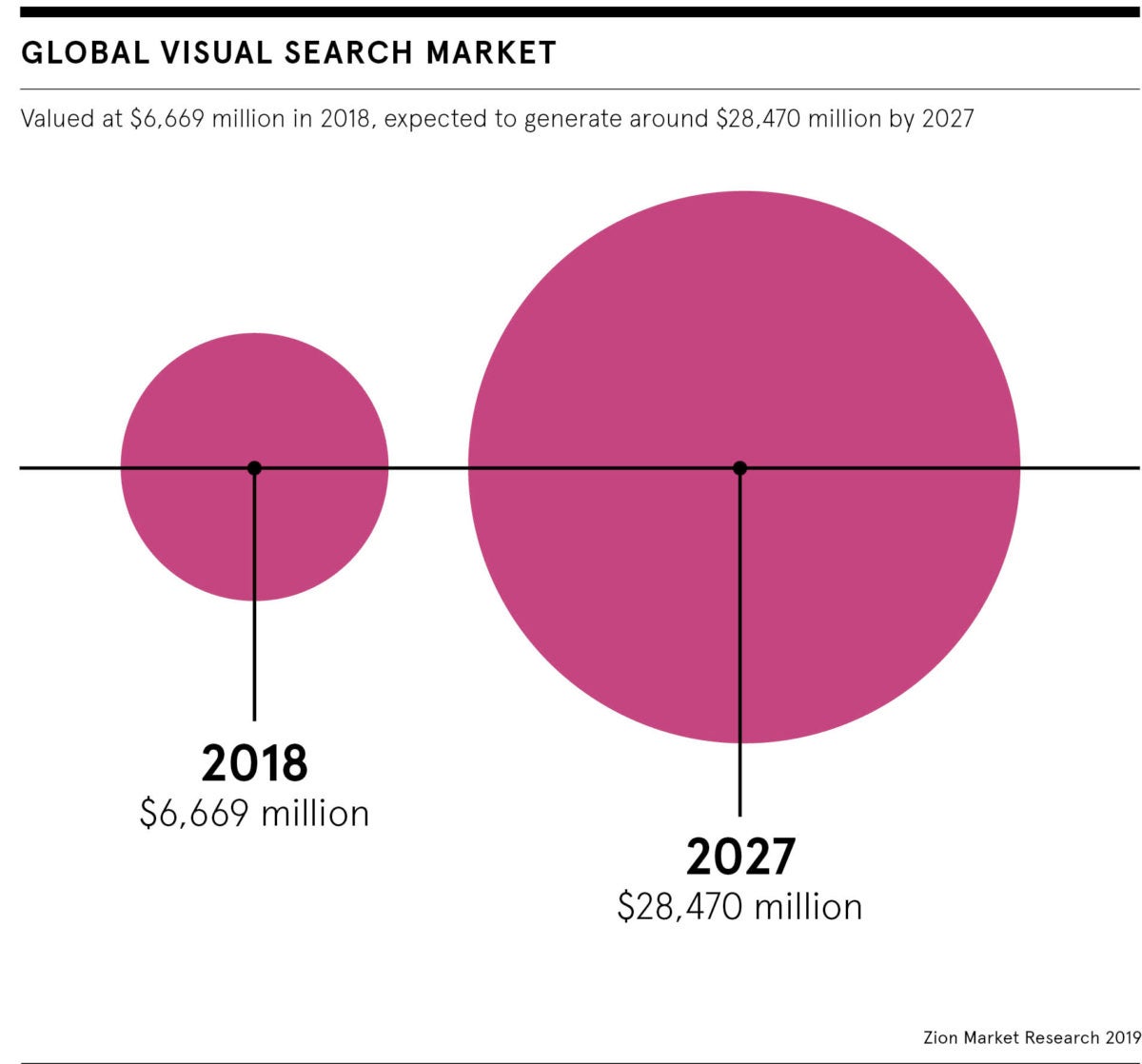Download “#VisualSearch” now for your guide to building the ultimate customer-led experience
Our lives are more visual than ever. Social media has taken ecommerce to new heights and customers are increasingly relying on Facebook, Pinterest and Instagram for style inspiration, advice and trend updates.
Visual attraction has become our new currency and brands are carefully curating themselves online to rise above the ranks.
And visual search capitalises on this trend. Not to be confused with traditional image search, it enables consumers to use real-world images, from screenshots to photographs, to initiate a search online.
Using artificial intelligence (AI), it recognises patterns in an image and matches them to patterns stored in the algorithm’s memory.
Such a technology has particularly promising applications for home décor and fashion retailers.
It has the ability to break down language barriers and offer those with disabilities an easy way to find what they need online
Whether it’s a handbag someone spots on their commute to work or their favourite celebrity’s latest Instagram post of their living room, visual search enables users to find the item online, with ease.
In this retail revolution, the customer journey is clear and uncomplicated. An ASOS shopper for example, can simply take a photo of a desired item, use it to inform their search and generate an immediate result of all the similar products currently available.
While this may encourage customers to make quick impulse purchases, it can save them hours of searching for coveted items or typing in different search terms and scrolling through pages of results to find exactly what they’re looking for.
Intelligent iterations of the technology also enable customers to search for an entire ‘look’ or theme, embracing a key element of today’s consumer culture that text would struggle to capture.
Fashion retailer PrettyLittleThing, for example, decided to build a visual AI camera search option for customers to take or upload photos.
Argos has implemented a visual search service in the Argos iOS app, to which customers can upload their desired item to search the Argos online catalogue for similar products.
The retailer decided to invest in building visual search capabilities partly because it makes the brand more inclusive.
“It has the ability to break down language barriers and offer those with disabilities an easy way to find what they need online,” according to an Argos spokesperson.
“We want to offer customers an engaging, technology-led mobile shopping experience and this innovative way of shopping will make it even easier for customers to find exactly what they’re looking for.”

Argos is exploring how visual search helps bridge the gap between the physical catalogue and digital channels, by extending the functionality so the app could suggest products to complement items customers find on catalogue pages.
Visual search is constantly developing and opportunities for retailers to integrate it into their own website and social channels are growing, both online and in-store.
Retailers can use visual search to enhance their omnichannel offer with smartmirrors in dressing rooms, for example.
As we continue to use the internet to shop and be inspired, it’s very likely visual search will continue to gain ground. As it becomes more integrated into the customer journey, technology will continue to evolve, the boundaries between online and offline will continue to close, and ecommerce will become even more seamless.
Download #VisualSearch and find out:
- How is disruptive tech changing retail?
- Does brand loyalty matter?
- #Millennials#GenZ
- ROI: Return on Inspiration
Click here to download your copy


